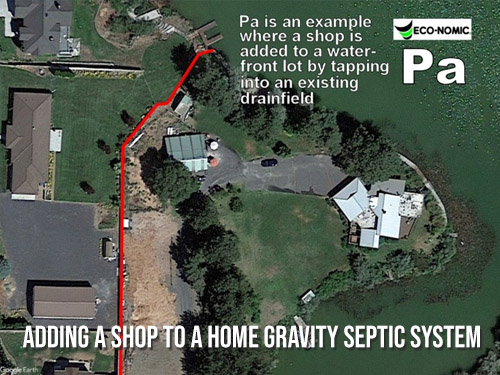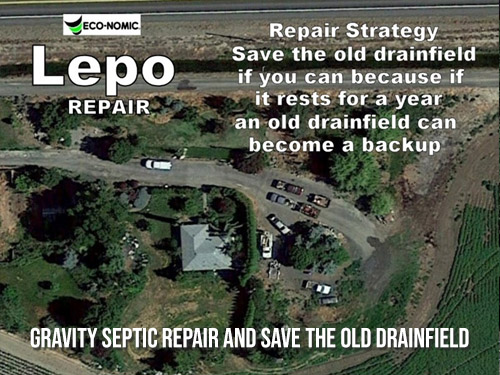In the quest for sustainable living, the impact of our choices on the environment is…

Gravity Septic Systems vs Pressure Systems
What are the Differences? Which system is better and why?
The term gravity septic system means that the sewage effluent leaving the septic tank winds up in the drainfield without the help of an electric pump. Septic systems used to be only gravity types, often with tanks and drainfields much deeper in the ground than modern standards will allow.
The first septic system appeared in France in the 1860s. The gravity “system” includes two main parts, a tank and a drainfield to dispose of the sewage. The sewer pipe leaving the building directs the sewage into a hollow concrete box, the septic tank. The septic tank has internal barriers and pipes to prevent “solids” and cooking grease floating in the tank water from entering the drainfield and clogging the soil. Organic solids and cooking greases can build up on the soil interface and cause drainfield “failure” when the soil will no longer absorb water. Owners usually discover failed drainfields when untreated sewage appears on the surface of the ground in the yard. Often a failed drainfield means that the toilets will not flush and drains in the house back up. Failure usually requires building a new drainfield in a new area.
Drainfields contain two or more equal length trenches in the yard beyond the tank. This is where the “treatment” of the sewage happens. The trenches are three feet wide, and up to a hundred feet long. Excavators must build the trenches at dead level. Trenches traditionally contain drainrock, a washed stone of uniform size, a little smaller than golf balls. Sewage effluent from the tank flows out into the drainfield into a level four-inch diameter plastic pipe with dime sized holes along both sides that (in theory) distribute the effluent evenly throughout the entire drainfield into the void spaces between the drainrock. Modern drainfields now can be constructed without drainrock. Instead, they utilize arch-shaped plastic vaults with open bottoms that provide a much larger storage space underground in the drainfield for sewage effluent as it slowly soaks into the soil below.
Besides getting rid of the wastewater, the constitutional purpose of septic systems is to prevent bacteria, viruses, and other organic and inorganic contaminants from human waste, and other health hazards contained in sewage from leaving the treatment process to contaminate the owner’s or a neighbor’s well or property.
Effluent spreads out on the floor of the drainfield and the billions of aerobic (air breathing) bacteria that live in the soil surrounding the drainfield trenches reduce organic pollutants to safe levels. These bacteria are the same as you would find in every city sewage treatment plant. There is scientific proof that professionally designed and built septic systems are as safe and effective in treating sewage pathogens as are municipal treatment plants.
Research has discovered that gravity distribution provides poor distribution of effluent within trenches. Placing the perforated gravity distribution pipe exactly level within the drainrock is impossible and much of the effluent comes out of the pipe through the lowest few holes anywhere along the pipe. In coarse gravelly soils, this overloads some areas in the drainfield with too much effluent, and some parts of the drainfield remain dry in patches.
Pressure distribution of the effluent utilizes an additional concrete tank called a pump chamber to hold an electric pump controlled by a float system and often with timers to force the sewage effluent into the drainfield into small diameter pipes (one to two inches in diameter) called laterals that are equipped with small diameter holes (as small as one eight diameter) drilled along their length every two to six feet apart. Pressure distribution with the pump or pumps controlled by a smart panel distributes the effluent evenly throughout the entire drainfield like an underground sprinkler system. Pressure systems prevent a patchwork of saturated and bone-dry areas within the drainfield. This prevents streams of semi-treated effluent in the drainfield from plunging deeper into the property and contaminating the underlying drinking water aquifers, especially in coarse gravelly soils.


